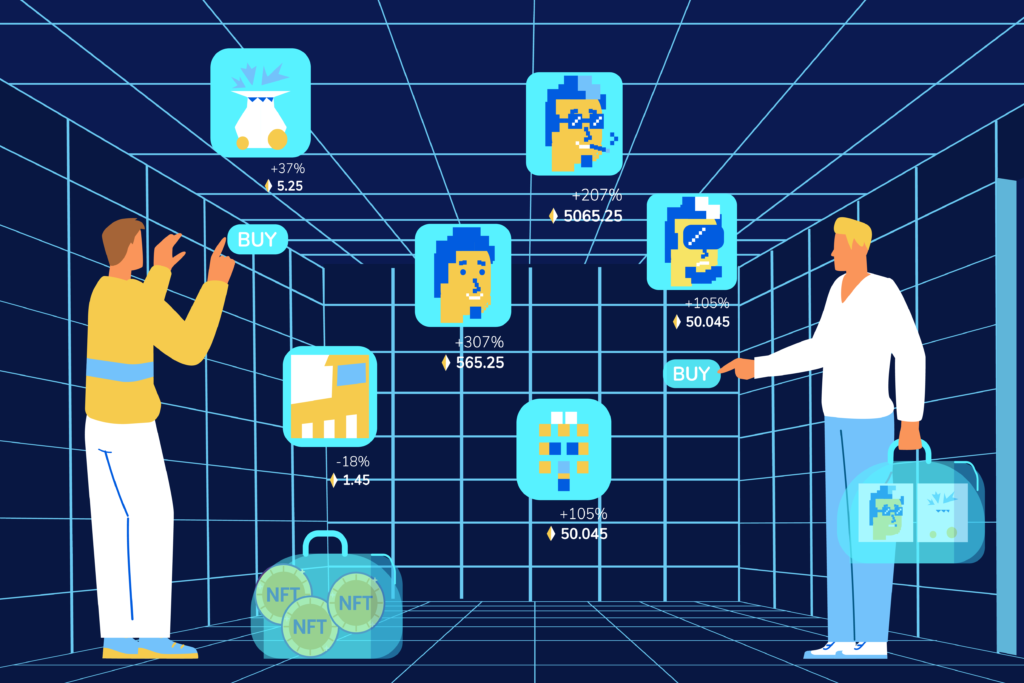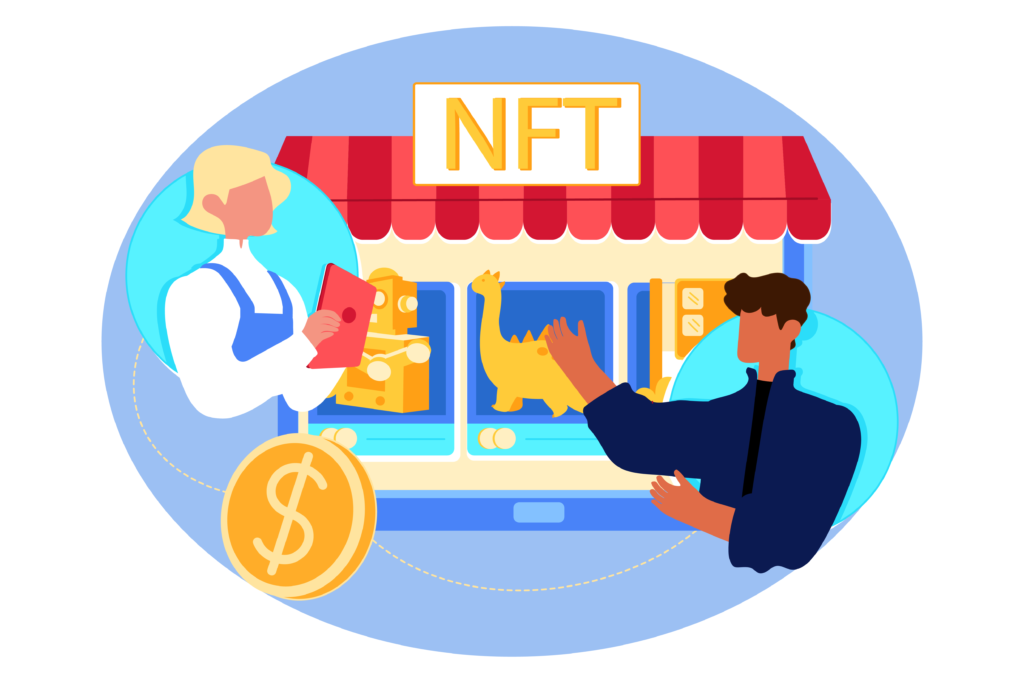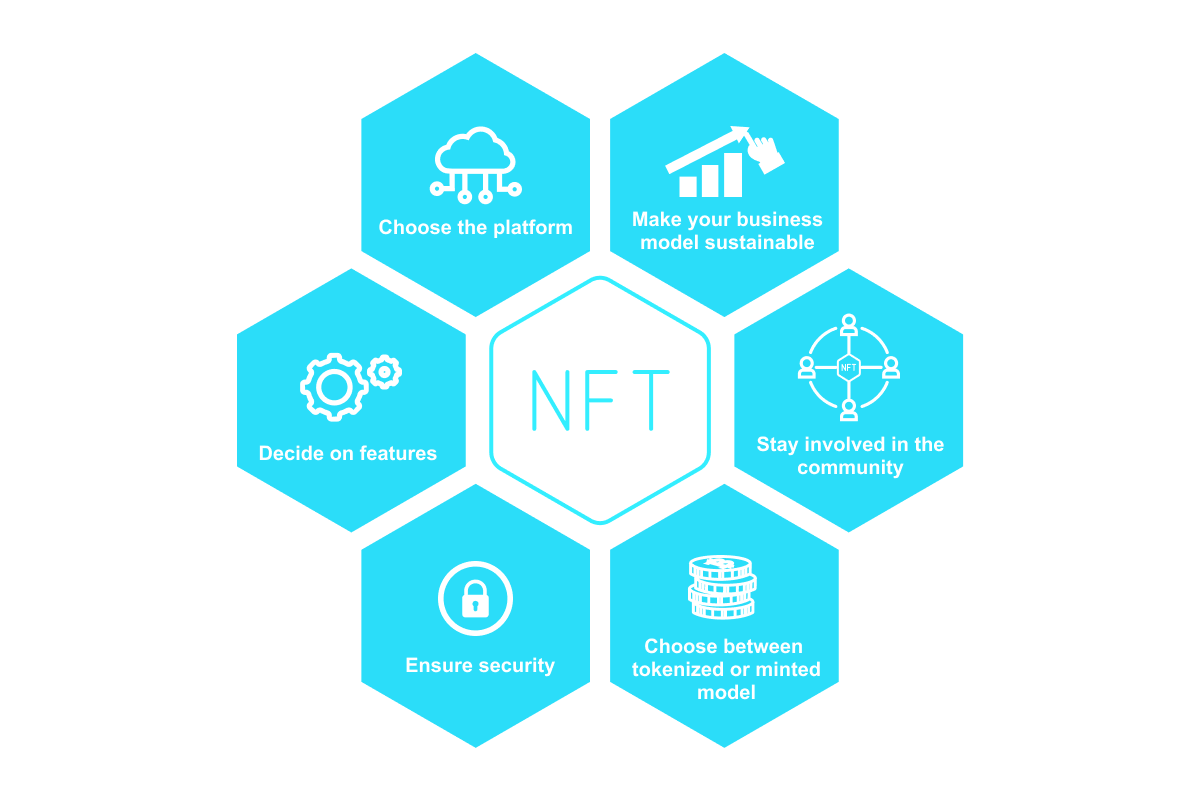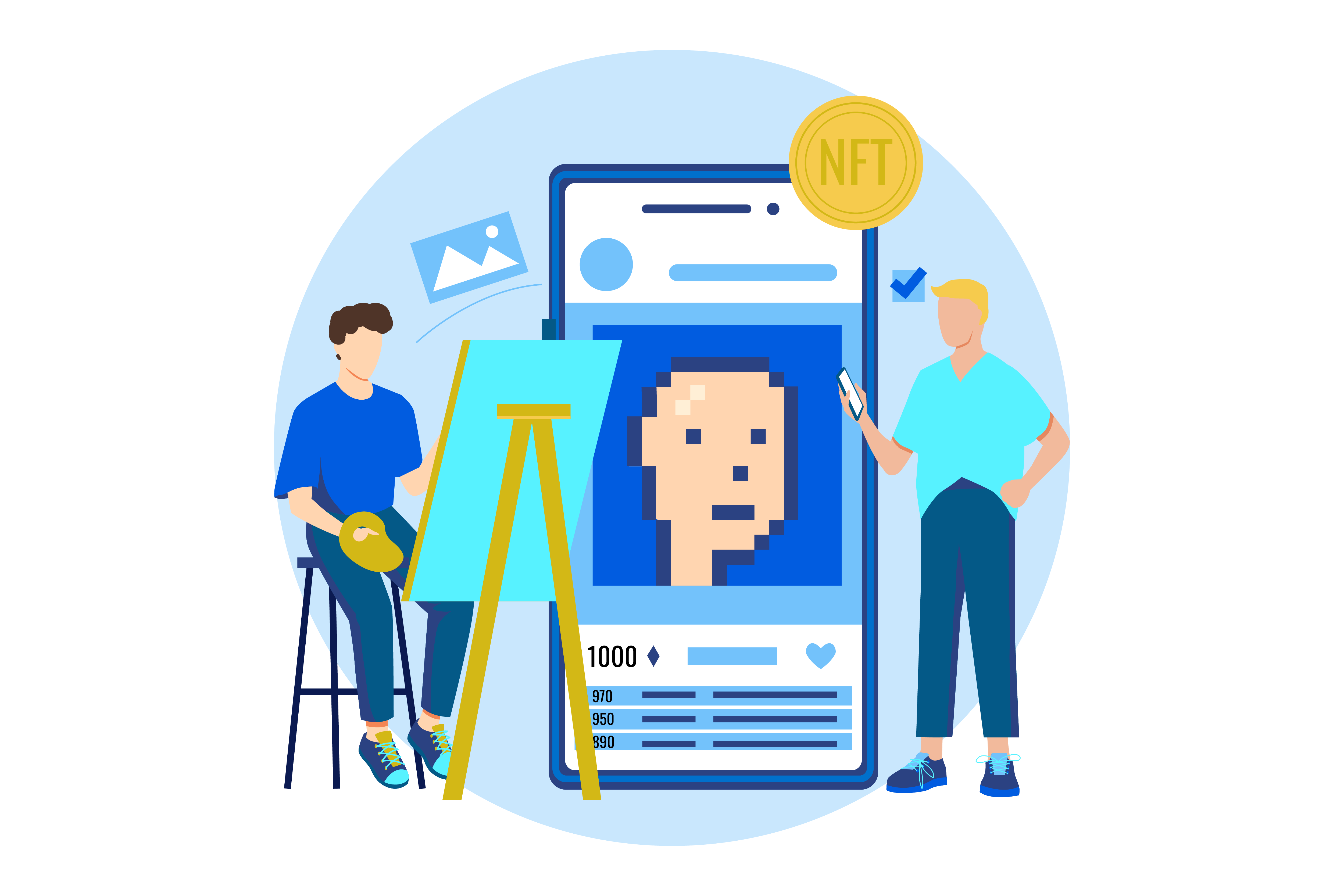NFT (Non-Fungible) marketplaces are blockchain-based online platforms that allow digital collectors to buy, sell, and develop tokens representing ownership of unique items. Read on to learn more about this phenomenon and get 6 practical tips on how to create your own NFT marketplace.
In today’s digital world, the word ‘NFT’ has become a buzzword as it’s bandied about everywhere. Moreover, non-fungible marketplaces are proving to be the future of trading goods. They allow people to exchange unique items for a set price in a secure and transparent way. However, this is a tricky task to create a high-performing NFT marketplace that ensures the highest level of data privacy and trading functionality.
Thus, the challenge is to build a platform that allows easy entry, attracts new users, and provides enough liquidity for anyone to buy or sell anything they want. In this article, we’ll go into the specifics of marketplaces for NFTs and give 6 valuable tips on how to craft a successful digital platform.
What is NFT Marketplace?

The popularity of these platforms is booming worldwide, prompting many blockchain companies and crypto exchanges to set up their own NFT marketplaces. Although all of these platforms have the same function, they differ in their features and interfaces. Some of them can be universal or art-oriented, while others occupy the niche.
One of the main benefits of an NFT marketplace is that you can buy and sell unique digital assets without having to go through cryptocurrency exchanges or third-party providers like PayPal or Amazon Payments. This makes it easier for buyers and sellers alike. Another advantage is that people from all over the world can easily participate in NFT transactions, even if they don’t have access to traditional financial systems or cannot register for online payment methods like PayPal due to privacy or security concerns.
The global NFT market is expected to grow to $13.6 billion by 2027 from $3.0 billion in 2022. The skyrocketing prices of non-fungible tokens and impressive trading volumes show that it is high time for companies of different sizes and types to enter the profitable marketplace industry.
How Do NFT Marketplaces Make Money?

Some platforms also charge transaction fees for NFT trading that occurs outside the marketplace. This can be useful to keep the liquidity of the markets high, but it also means that users who trade outside the platform don’t get transaction fees back in their digital wallets when they sell items.
NFT marketplaces make money by charging a commission on each sale. The commission is usually between 10% and 20%, depending on a platform. Some markets also charge fees for listing items for sale. For example, OpenSea charges a 2% to 2.5% fee per item listed with them.
NFT marketplaces are similar to traditional exchanges, but they have a few key differences:
- They don’t require traders to register with their real identity before using services. This means that users can remain anonymous when trading cryptocurrencies on these exchanges.
- They offer fee discounts for traders who pay with cryptocurrency instead of fiat currency (e.g., USD). This encourages more traders to purchase digital gold from these exchanges than from others that don’t offer such incentives for using it as payment methods.
6 Tips on Creating a Robust NFT Marketplace
Building an NFT marketplace is a tricky task to complete due to some peculiarities that distinguish it from other platforms. If you lack skills and knowledge on how to do it in a profitable way, you may end up spending a lot of effort and resources and not getting the desired results. That’s why we have put together 6 tips on how you can create a state-of-art NFT marketplace and avoid the common pitfalls.
-
Determine which platform you want to use to create your NFT marketplace
If you are considering setting up a marketplace for NFTs, it’s important to know the different types of platforms and how they can help you achieve your goals. Each platform offers various benefits and caters to different groups of customers. Before you mint or sell your NFTs, you should research the different options available, figure out where your ideal customers are, and then decide what works best for your project. There are many options available, but the most popular are:
Ethereum-based blockchains. These are among the most common, as they offer a high degree of security and flexibility.
Non-blockchain-based platforms. These platforms may not be as secure or flexible as blockchain-based ones, but they offer a lower barrier to entry for new developers.
To have a successful project and drop, you need to know where to sell your NFTs and on which blockchain to mint them.
-
Figure out which features you want to include and which can be added later
The first step to creating a powerful NFT marketplace is to identify all the features that you would like to include. This may seem obvious, but it’s important to think about what you want from your platform from the beginning. You don’t need to build a feature that no one uses or that does not fit with the rest of your product.
There are two main types of features: those that are critical to your business model and those that can be added later. For example, if you’re building an NFT marketplace where people can buy and sell digital art, you need to provide a way for sellers to upload their art and for buyers to purchase it. However, if you’re creating a platform where people buy and sell virtual land in a game world, you don’t need to enable the sale of that asset until the game launches — no one can buy anything until then.
-
Keep security in mind when building your marketplace
The best way to do this is through blockchain technology, which is essentially an immutable ledger that stores information about every transaction made on the NFT marketplace platform. This means that it is nearly impossible for anyone to manipulate or change past transactions — even if they wanted to.
The most important thing when it comes to security is protecting your users’ private information. This includes making sure their funds are safe and secure while they interact with your marketplace. You should also consider how to protect yourself from phishing attacks and other forms of theft or fraud.
Security always comes first for any entrepreneur, but especially when trading cryptocurrency. Make sure you take strong security measures to protect both your users’ personal information and their funds while they use your NFT marketplace platform. Consider things like 2FA and digital wallets with multiple signatures (e.g. parity bridge) when designing your security infrastructure.
-
Decide whether you’re going with a tokenized or minted model
There are two types of NFT marketplaces: tokenized and minted. The difference between them is that tokenized platforms use ERC721 tokens on Ethereum or another blockchain, while minted markets use other types of digital assets (like XRPL). Let’s take a look at the details.
In a tokenized model, users purchase NFTs with cryptocurrency and then use them to pay for goods or services. This can be done through an application like CryptoKitties, where you can buy a CryptoKitty that is different from all the others. You can also use your app to pay for things like food or accessories for your cat at their store.
In a minted model, NFTs are created by the platform itself, and users purchase these assets with flat currency (i.e., dollars). This is similar to how companies issue stock certificates when they want to raise capital.
-
Stay involved in the community as you develop your platform
This is important to stay connected with the people who will use your NFT marketplace platform, so make sure you engage in the communities that exist around your project. This includes social networks like Twitter and Reddit, but also forums like Discord or Telegram. You should also reach out to other platforms that offer similar services and ask if they are willing to partner with you (and vice versa). This is how you build relationships with other players in the field, which can lead to increased growth for both sides later on.
It’s crucial to understand what people want from their experience with NFTs and how they want to interact with them. Only then you can design an ecosystem that provides what they need. So, it is highly advisable to communicate with potential users as well to find out what they are like and what they are looking for on NFT marketplaces.
The world of digital assets is very young, and the blockchain community is not immune to the problems associated with any emerging industry. In some ways, it is even worse because businesses are trying to form a new kind of asset class while running their own companies.
That is why it is important to get involved in the community as you develop your platform. As an entrepreneur building a crypto NFT marketplace that will be at the center of this industry, it is crucial that you understand what competitors do so that you can make informed decisions about how to approach your own business.
-
Make sure your business model is sustainable
One of the most enduring challenges for any business is to create a sustainable model. This is especially true for blockchain-based companies, which are still in their infancy and have yet to find their niche in the market. That means you need to make sure that your platform generates enough revenue to cover all operating costs and make a profit.
At first, you may have a great idea for an NFT marketplace, but do not yet know how to monetize it. That is okay — but do not go too far down the rabbit hole without first getting feedback from potential customers about what they would pay for on your platform. Our advice for NFT markets that are still in their infancy is to design a sustainable business model from the start. Do not rush this process, as it can lead to many disappointments. Before you start developing your reliable NFT marketplace platform, think about your values, goals and resources, create a sustainability plan, find out what your potential users want, and only then develop your platform.
Wrapping Up
Creating a robust NFT marketplace that solves the customer experience problem between buyers and sellers is a tricky task if you do not know the ins and outs of the industry. In this article, we have given you useful tips on how to develop your platform so that it is attractive to users, offers a high level of security and does not cause extra expenses.
However, if you want to get the best results, you need to turn to an NFT marketplace development company. Our team of engineers builds custom blockchain solutions that will help you stand out from your competitors. Contact us today!



